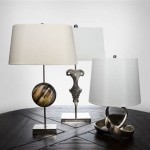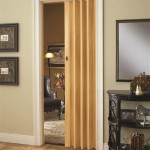Essential Aspects of Interior Window Molding
Interior window molding adds character, depth, and sophistication to any room. Whether you're looking to enhance the existing architecture or create a new focal point, molding can elevate the visual appeal of your windows. Understanding the different types of molding and their functions is crucial for informed decision-making and achieving the desired aesthetic.
Types of Interior Window Molding
Interior window molding comes in a wide range of styles and profiles, each serving a specific purpose:
- Casing: Frames the window opening and conceals any gaps between the window and the wall.
- Apron: Extends from the bottom casing to the floor, adding depth and elegance.
- Sill: Caps the bottom of the window, protecting it from moisture and creating a finished look.
- Trim: Narrow strips that accentuate the edges of the casing, sill, and apron.
- Crown: Decorative molding installed at the intersection of the ceiling and the wall, above the window.
Choosing the Right Molding
Selecting the appropriate molding for your windows depends on several factors:
- Window style: Contemporary windows often pair well with simple, clean-lined moldings, while traditional windows suit more ornate profiles.
- Room style: The overall decor of the room should dictate the molding style. Formal rooms benefit from intricate molding, while casual spaces can opt for simpler designs.
- Size of window: Larger windows require wider molding to create a proportionate look.
- Material: Molding can be made from various materials, including wood, MDF, and PVC. Wood is the most traditional and durable, while other options offer affordability and ease of maintenance.
Installation and Finishing
Proper installation is essential for the longevity and aesthetic appeal of window molding. Use a nail gun or adhesive to secure the molding in place, ensuring a tight fit with no gaps. Countersink the nails and fill any holes with wood filler for a seamless finish. Paint or stain the molding to complement or contrast the window frame and walls.
Benefits of Interior Window Molding
Incorporating interior window molding offers numerous advantages:
- Enhances aesthetics: Molding adds visual interest and complements the architectural style of a room.
- Conceals gaps: Casing and other moldings conceal any imperfections between the window and the wall, creating a polished appearance.
- Improves insulation: Molding can help seal air leaks around the window, reducing drafts and improving energy efficiency.
- Increases property value: Well-chosen and installed window molding can increase the perceived value of your home.
Conclusion
Interior window molding is an essential element that can transform the look and feel of your space. By understanding the different types of molding, choosing the right style and material, and installing it properly, you can create a cohesive and aesthetically pleasing interior that will enhance the architectural features of your home.

Make Easy Farmhouse Window Trim With Stock Lumber Funky Junk Interiors

How To Update Window Trim Angela Marie Made

How To Install Craftsman Style Interior Window Trim Abby Organizes

5 Modern Interior Window Trim Ideas

Choosing Interior Window Trim For Your Home Pella Windows Doors

Diy Window Trim The Easy Way

Window Trim Ideas For Decor And Function Pella

How To Trim A Window The Home Depot

How To Upgrade Your Interior Window Trim Marc Poulos Painting

How To Diy Window Trim Custom High End Finishes On A Budget








